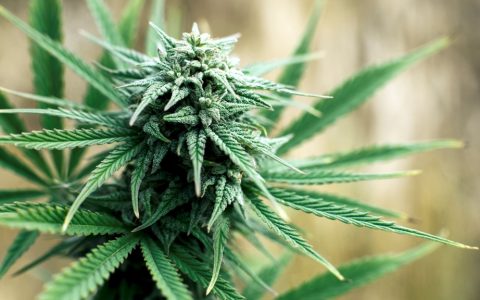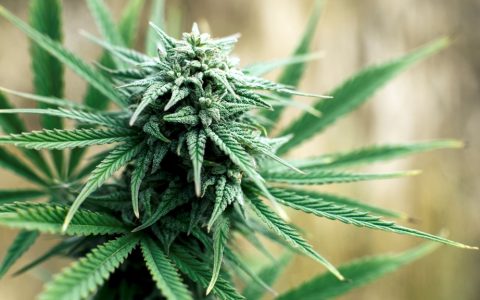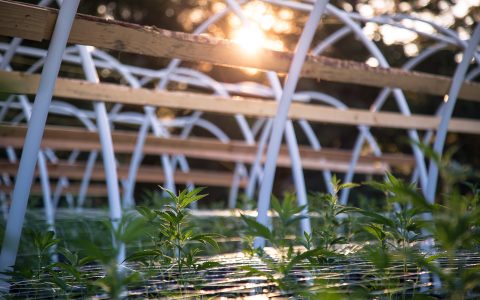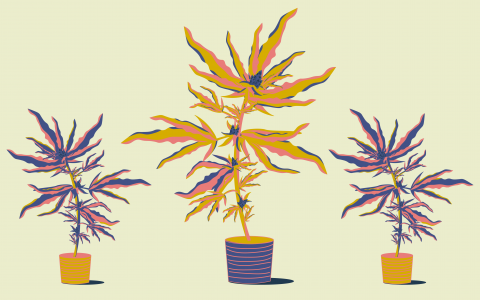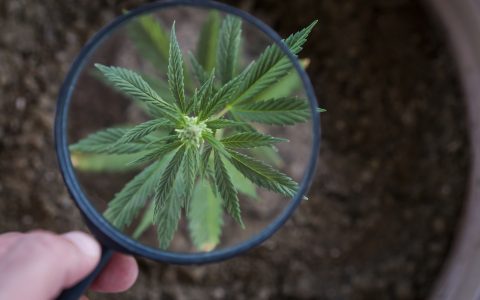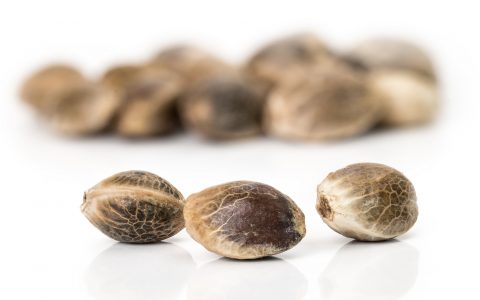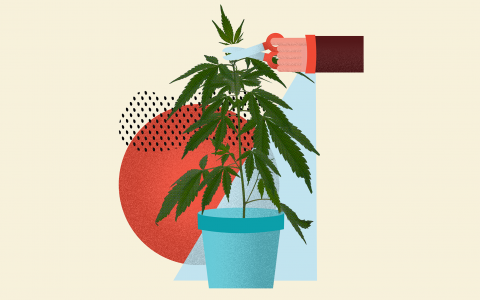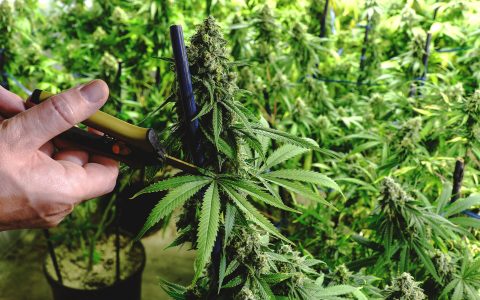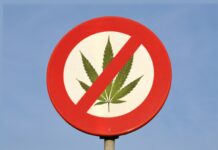Growing cannabis outdoors is easy. All you need is a nice open space that gets lots of light, a water supply, good soil, and a way to cover the plants when the weather turns.
One of the most important things to know is that cannabis is dependent on a photoperiod, meaning that it changes from the vegetative to flowering stage when days start to shorten and nights get longer. You want to time things right so that your plants can maximize their exposure to light during the summer before fall sets in.
Growing and harvest times here reflect ranges of time in the Northern Hemisphere. For more growing tips on specific regions, check out this guide on different climates.
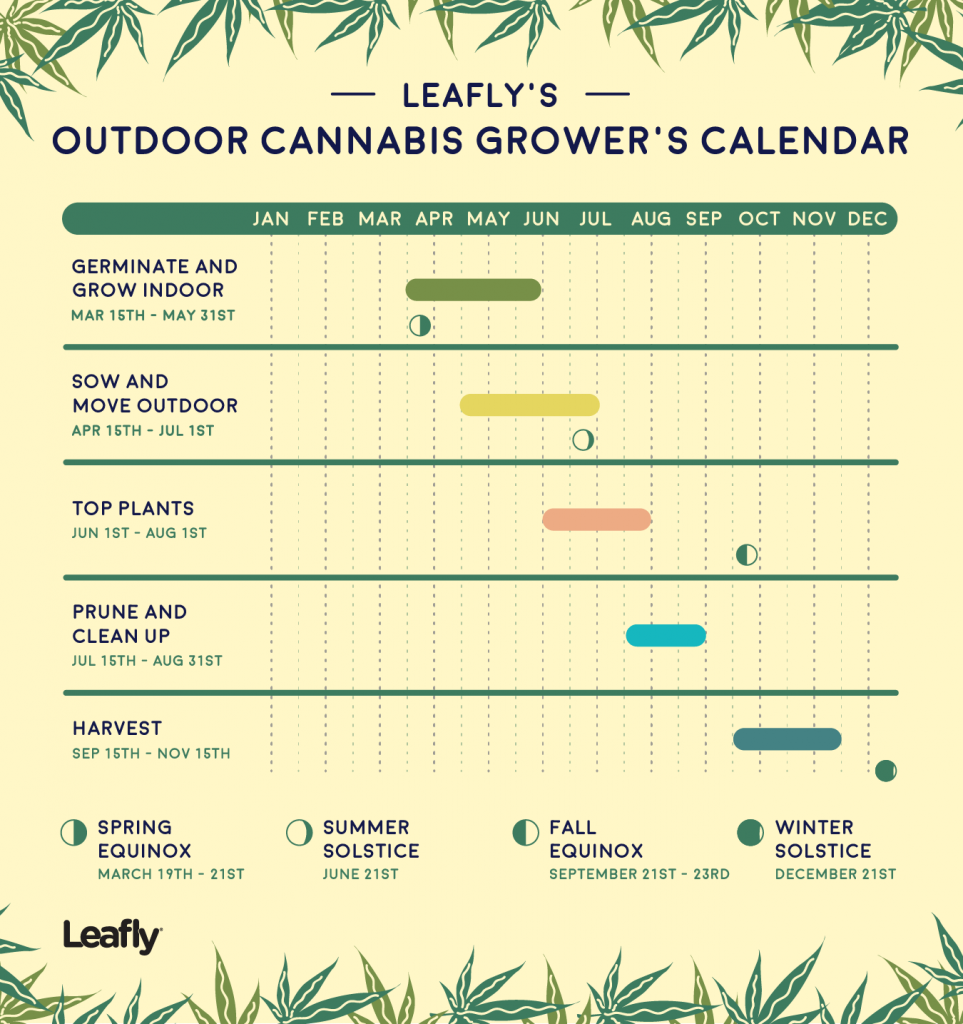 Click to enlarge. (Elysse Feigenblatt/Leafly)
Click to enlarge. (Elysse Feigenblatt/Leafly)
On the West Coast of North America alone, cannabis farmers in Northern California have a long season: They can put plants outside early and harvest later into the season because of the region’s relatively warm weather.
Washington state, on the other hand, will have a shorter time frame, as plants can’t be put outside until later in the season because there’s not enough sunlight yet, and the harvest needs to be completed earlier, before cold weather descends on buds and makes them wet and moldy.
Important Dates
The Spring Equinox is a good reminder that it’s time to kick off the outdoor growing process and start popping your seeds.
As the sun reaches up high in the sky, your cannabis will want to as well. Make sure all of your plants are outside around the Summer Solstice.
The weather will start to turn and the sun will begin descending as your plants fatten up with sweet, sticky buds. It might be tempting, but wait until around the Fall Equinox to start harvesting.
Everything should be cleaned up, dried, and curing well before the Winter Solstice. Now’s a good time to make your own cannabutter, topicals, or tinctures with all that trim from the harvest. Kick your feet up, relax, and hunker down for the cold, it’s been a long growing season!
Notes on Phases
We can’t stress enough that the time frames on this graphic are ranges of time in the Northern Hemisphere. You’ll need to adjust to them based on your specific region and local weather and climate.
Be sure to keep a grow journal to track the progress of your plants. Looking back on your notes will help you learn from mistakes and maximize the quality and quantity of your buds.
Take meticulous notes on when and how you perform each step, as well as what the weather is like. Other notes can include how much water you give plants, at what intervals, and how much nutrients you give them. Pictures will also give you a better sense of how your plants look along the way.
Germinate & Grow Indoors
It takes about 3-7 days to germinate a seed. A lot of growers will do this indoors because seeds are delicate and it’s easier to control the temperature and climate inside. But if you live in a warmer climate, by all means, start growing them from seed outside.
When you start growing your seeds depends partly on how big you want your plants to be for harvest. If you’re going for high yields, the earlier you grow your plants, the bigger they’ll be. But keep in mind that smaller plants are more manageable and easier to top and prune.
Sow & Move Outdoor
If you live in a warmer climate, you can go straight to planting outdoors. But if you grow your plants vegetatively indoors first, this is the time frame that you’d move your plants outside so they can get some serious sunlight.
Top Plants
You’ll want to top your plants a few times throughout the season, to encourage outward development and make your plants bush out. It’s a good idea to give them an initial top after the plant develops five nodes.
Additional topping can happen as needed, but you shouldn’t have to do any more into August, when plants will be well on their way to flowering.
Prune & Clean Up
This is something that needs to be done as-needed. You want to get rid of dead leaves and lower branches that won’t get light so that the plant can use that energy for producing buds elsewhere.
If you have a large crop, growers clean up their plants anywhere from 1-4 times during the season.
Harvest
What kind of strain you have and what climate you live in will determine when to harvest your strains. Indicas grow stouter and bushier and there is more of a concern that their dense buds will get moldy, so they’re usually harvested on the early side of the season. Sativas are generally taller and less dense, so these can usually get harvested second.
Colder climates will need to finish their harvests earlier, for fear of cold weather setting in and molding out buds. Warmer climates can sometimes harvest well into November.


